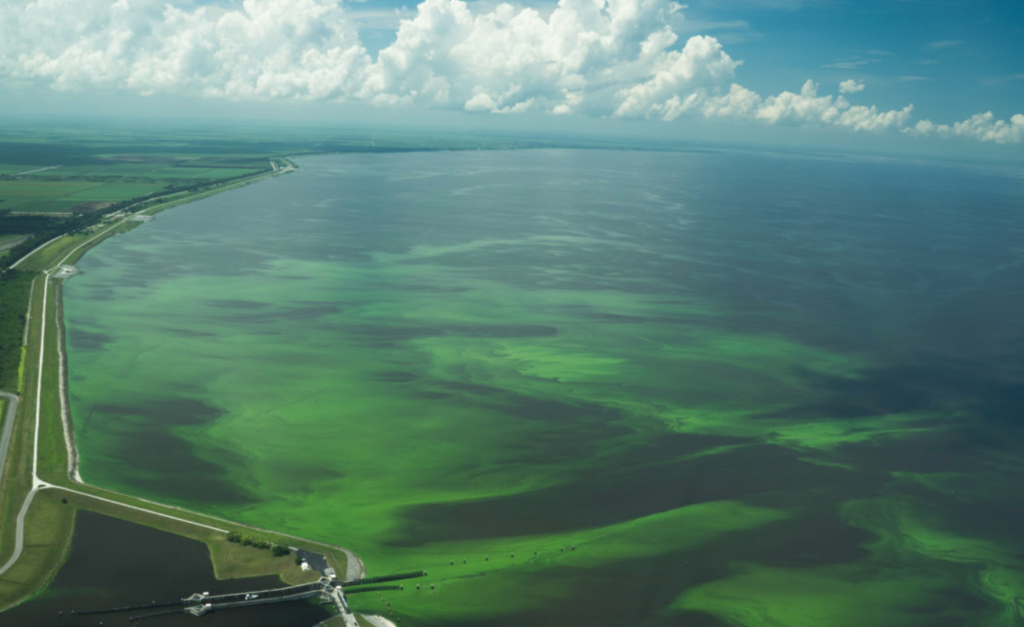
Another year of Lake Okeechobee toxic discharges to the Caloosahatchee and St. Lucie estuaries highlights an uncomfortable fact for Florida politicians: Water managers claim their top priority is human health and safety, but in truth, the whole system is operated for the benefit of sugarcane.
In July 2016 the toxic guacamole blanketing the St. Lucie made national news; in 2018, the Caloosahatchee is taking it on the chin with both higher toxicity and uglier images. More important, with scientific evidence linking toxic algae to ALS, Alzheimer’s Disease, liver cancer and other life-threatening ailments, it’s time to expose Florida’s deceptive water management priorities that are putting humans at risk on a recurring basis.
The two agencies in charge of the system, South Florida Water Management District (SFWMD) and Army Corps of Engineers (USACE), conflate flood control for humans with flood control for sugarcane fields. Humans and cane fields need to be separated and treated by water managers independently, with different levels of priority. Congress has the authority, and the moral obligation, to make this happen.
Without getting too ‘wonky,’ a 1948 law essentially allows sugar companies, predominantly US Sugar and Florida Crystals today, to dump polluted runoff from privately owned fields into a public network of canals whenever it rains. It rains a lot in Florida during the summer, and the sugar companies are always allowed to dump their runoff into the canals first, regardless of how it impacts others.
Draining 800 square miles of sugarcane fields grown in a bowled-out former swamp overwhelms the system, flooding out everything, forcing discharges east and west and even back-pumping–forcing runoff back uphill into Lake Okeechobee.
LINK (via: Tail Magazine)





